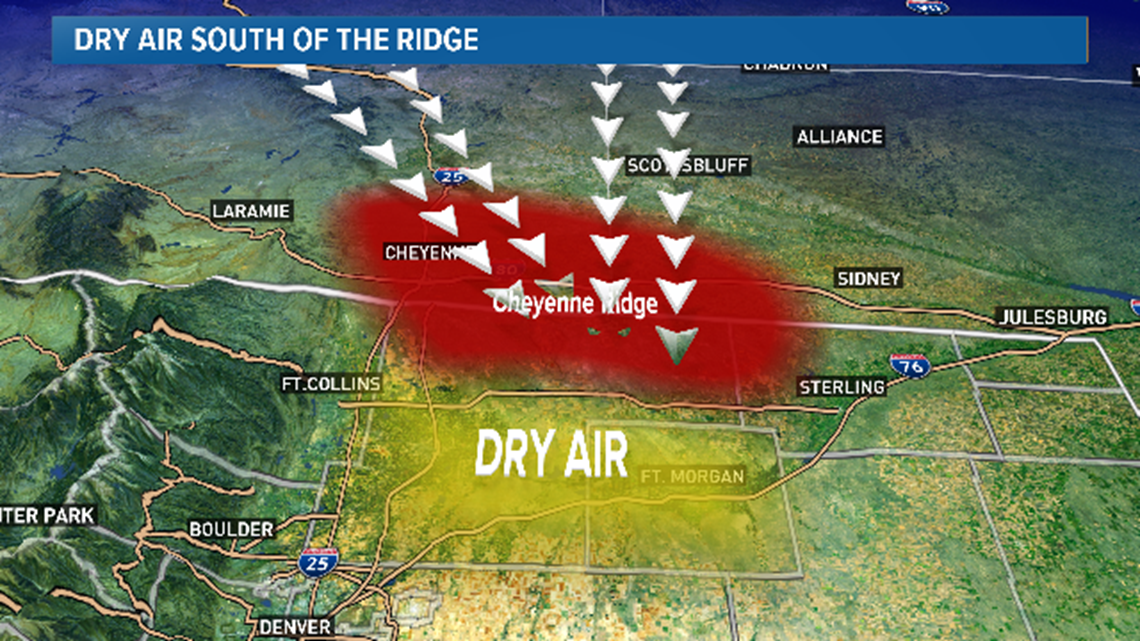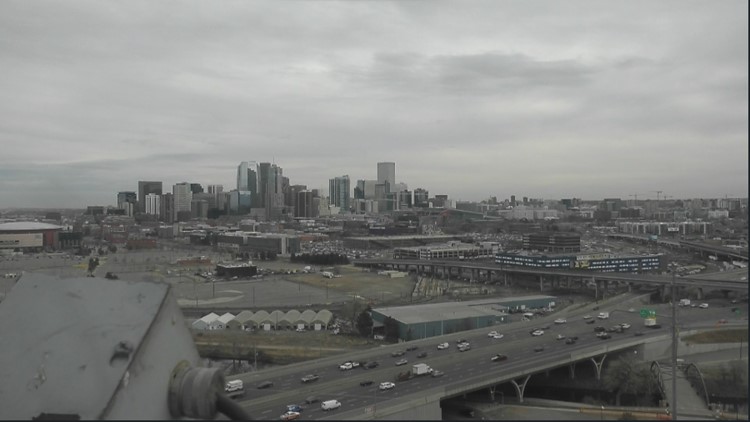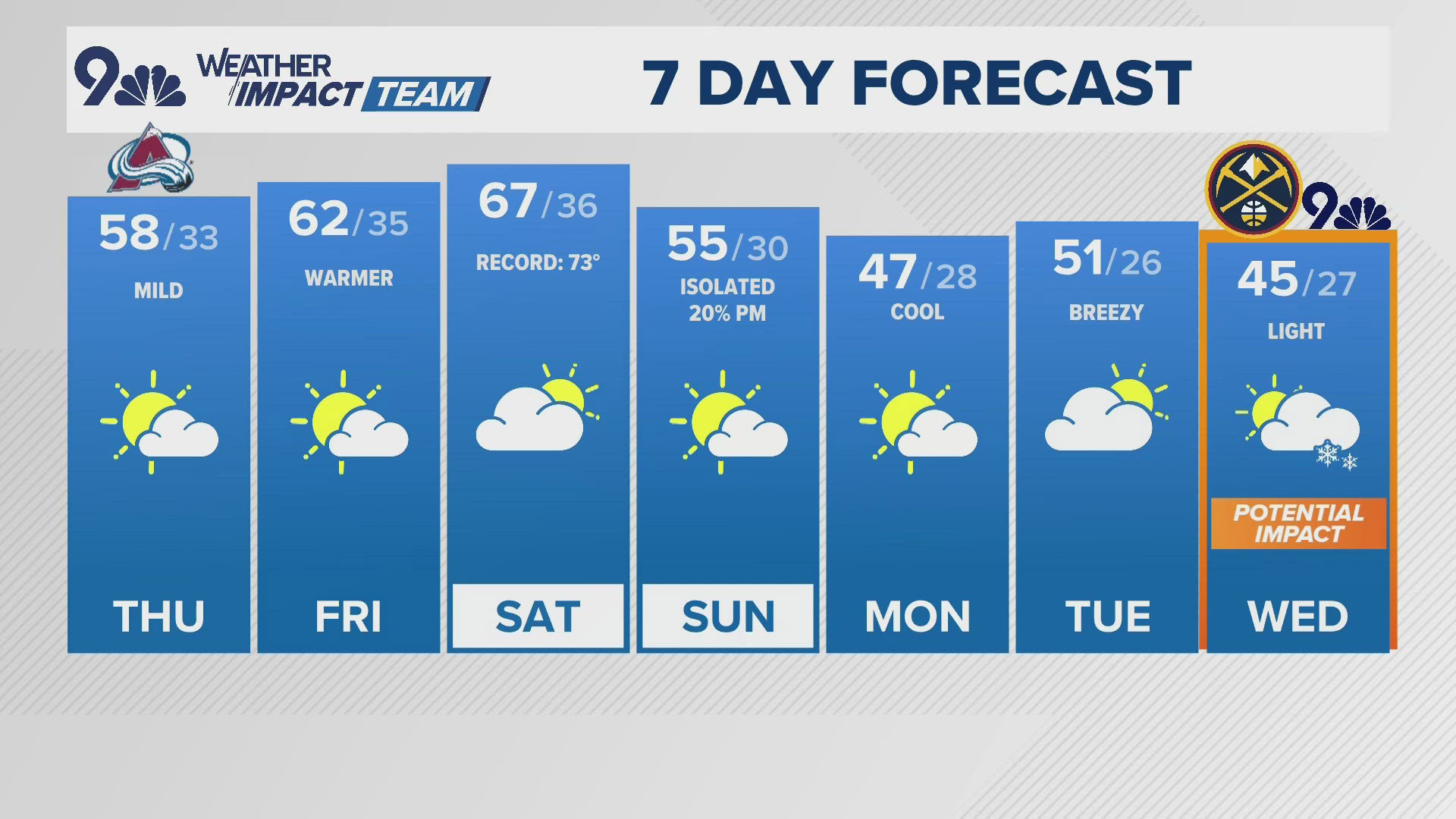DENVER — Picture this.
You wake up on Tuesday morning in downtown Denver to maybe an inch or so of snow. You turn on 9NEWS, and you see a raging blizzard at Denver International Airport, with six or more inches of snow blowing around.
That's an entirely realistic outcome. And it all comes down to the exact placement of a powerful snow band set to pivot through eastern Colorado Tuesday morning.
Let's start off with a wide view. A big area of low pressure spins through eastern Colorado Monday night into Tuesday morning.
On the northwest side of this area of low pressure, a narrow area of stretched-out and warmer air (known as a deformation zone) will spin through. That'll create a relatively narrow band of heavy snowfall.
If that band moves over Denver, it could mean the city winds up with six or more inches of snow. If it doesn't, we may only get an inch or two - though that'll be enough to disrupt travel for the Tuesday morning commute in particular.
Otherwise, our winds will be mostly coming out of the north or northwest. For Denver, those are known as downsloping winds. Those winds dry as they slope down the Rockies and the Cheyenne Ridge, and that could lead to little or no snow for most of the Denver area.
For most of the Denver area, we'll be right on the fringe of this powerful snow band. If we get hit by it, it could lead to several inches of accumulation. If not, we might just get a few flurries.


Upslope winds generally lead to more snow, and for Denver, those winds come out of the northeast.


The most likely scenario, as of Monday afternoon, appeared that downtown Denver would end up with 2-4 inches of snow, with higher amounts on the east side of town rather than the west side.


On Monday, computer models appeared to be nudging the snow a bit further west, an indication that a higher-end snowfall scenario for areas along and east of I-25 was still in play.
But don't be surprised if Golden, Morrison, Arvada and Boulder barely get any snowfall while Aurora and Denver International Airport get six or more inches of accumulation.
We'll keep you posted, as always.
SUGGESTED VIDEOS: Colorado Climate



